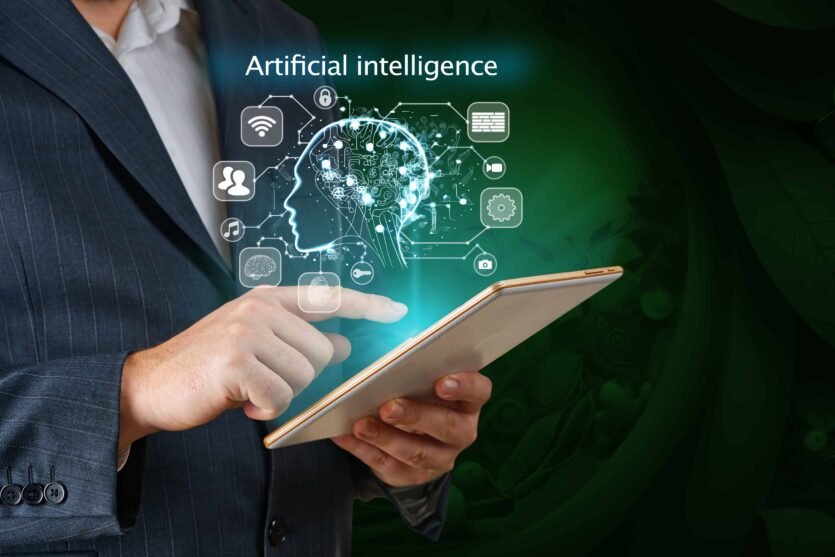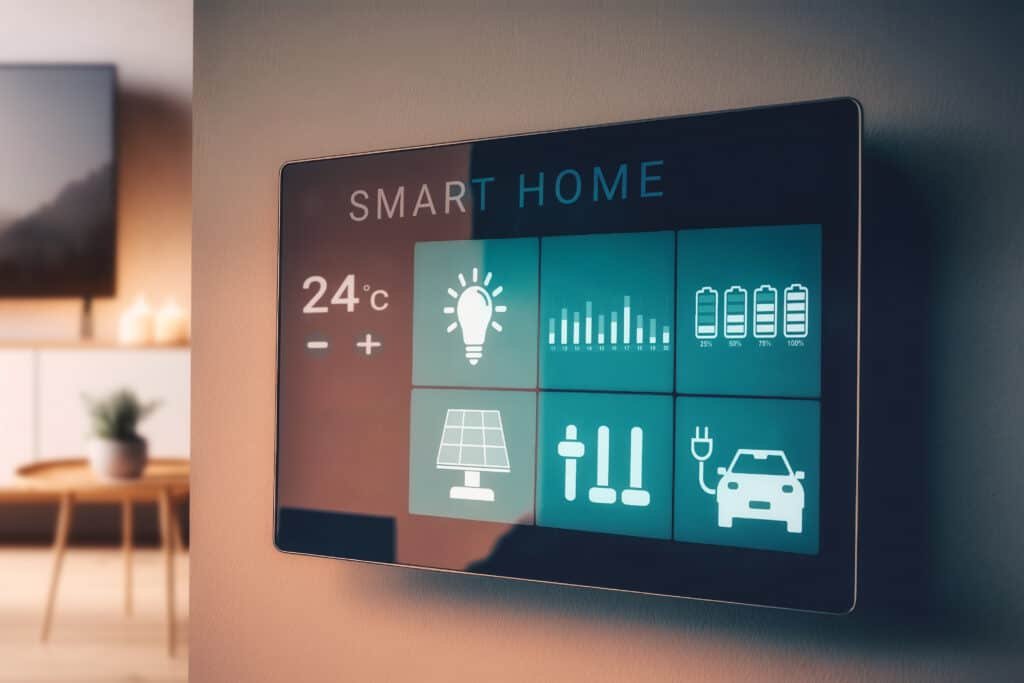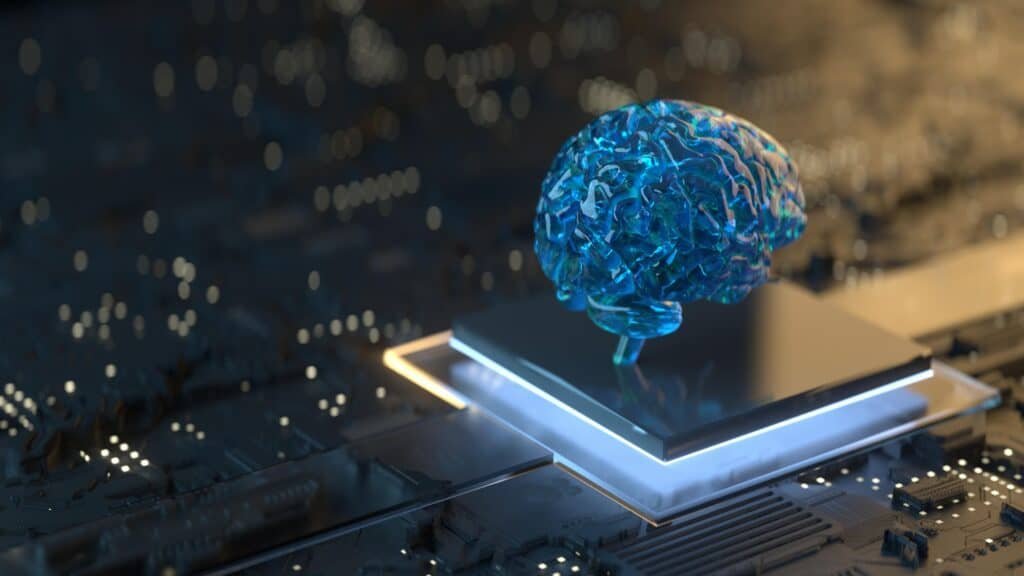Exploring the Future of Internet of Things

We may earn a small fee from the companies mentioned in this post.
Imagine a world where everything is seamlessly connected, from your morning coffee maker to the traffic lights on your daily commute. This world is not a distant dream; it’s already taking shape as the Internet of Things (IoT) continues to expand at an unprecedented rate. By 2025, it is estimated that there will be 21 billion IoT devices, influencing every aspect of our lives. Exploring the future of Internet of Things explores the future of amazing technology, delving into its impact on society, business, and the way we interact with technology.
In this journey through the IoT landscape, we will discover the expansion of IoT devices in everyday life, the role of artificial intelligence (AI) and machine learning (ML) in the future of the Internet of Things, the influence of 5G networks on IoT growth and innovation, and the importance of addressing IoT security challenges. We will also discuss the future impact of IoT on society and business, touching on environmental sustainability, new business models, and ethical considerations. Let’s embark on this exploration and uncover how the future of the Internet of Things will shape our world in the years to come.
Short Summary
The Internet of Things (IoT) is revolutionizing the way we live, work and play with an estimated 21 billion devices by 2025.
AI/ML are essential to IoT success, providing personalized user experiences and enhanced security measures.
5G networks enable faster data transfer speeds for more efficient applications while addressing security challenges to ensure a secure landscape.
The Expansion of IoT Devices in Everyday Life

The Internet of Things is rapidly integrating networking capabilities into every aspect of our lives, leading to greater efficiency, cost savings, and the ability to access our digital lives whenever necessary. From baby monitors to automobiles, IoT devices are becoming more commonplace, providing convenience and cost savings to users. By 2025, it is estimated that there will be 21 billion IoT devices, revolutionizing the way we live, work, and play.
As IoT devices continue to proliferate, they are finding their way into various aspects of our daily lives, such as smart homes and appliances, wearable technology, and industrial applications. In the following subsections, we will delve deeper into these areas, exploring how IoT is transforming our world and opening new possibilities for innovation.
Smart Homes and Appliances
A smart home is a residence equipped with internet-connected devices that allow remote monitoring and control of various appliances and systems. IoT devices play a crucial role in creating smart homes, providing control and monitoring of devices, cost and energy efficiency, enhanced security, environmental impact, and increased comfort. By 2023, it is expected that 350 million smart homes will be in existence, showcasing the rapid growth of this technology.
With the help of IoT, everyday appliances such things devices as washing machines, robotic vacuum cleaners, door locks, and security cameras are becoming smart devices, allowing users to monitor and control these hardware devices remotely. This not only provides convenience, but also enables more efficient use of energy save time and resources, ultimately saving time and money.
Furthermore, the increasing use of voice assistants in daily life, with 65% of individuals between the ages of 25 and 34 utilizing them, highlights the growing appetite for smart home technology.
Wearable Technology
Wearable technology refers to a range of devices designed to be worn on the body, such as fitness trackers, smartwatches, and medical devices, which can be used to monitor and track various activities. Integrating IoT devices into wearable technology offers numerous benefits, including real-time data and insights for users, remote monitoring and tracking of patients, warning alerts about possible health issues, faster and more accurate diagnosing, and reduced healthcare costs.
However, there are challenges associated with wearable technology, such as privacy and security concerns, battery life, and cost. Additionally, potential health risks, such as skin irritation and electromagnetic radiation, should be taken into consideration.
Despite these challenges, the potential applications of wearable technology are vast, including fitness tracking, medical monitoring, remote patient care, virtual reality headsets, and smartwatches. As IoT continues to advance, we can expect wearable technology to become more sophisticated, secure, and accessible.
Industrial Applications
IoT is not only transforming our homes and personal devices, but it is also making a significant impact on various industrial applications, including agriculture, farming, energy, enterprise, finance, healthcare, retail, and transportation. These sectors are witnessing the power of IoT in optimizing processes, reducing costs, improving security, and enhancing productivity.
For instance, IoT devices can be used to monitor and control industrial equipment, providing valuable insights into equipment performance and maintenance needs. This allows for predictive maintenance, which can reduce downtime and increase equipment uptime. Additionally, IoT devices can enhance safety and efficiency in industrial settings by providing real-time data on equipment status, environmental conditions, and worker health.
As the IoT landscape continues to expand, we can expect to see even more industrial applications harnessing the very low power used of connected devices for improved performance and innovation.
The Role of Artificial Intelligence and Machine Learning in IoT

Artificial intelligence and machine learning are becoming increasingly important in the realm of IoT, as they enable devices to make intelligent decisions based on the vast amounts of data they collect. AI and ML help IoT devices provide context and creative insights, leading to applications such as risk management, fraud detection, and predictive maintenance. By analyzing user habits and patterns, machine learning enables IoT devices to adapt their default settings, based on user preferences, providing a more personalized user experience.
In the following subsections, we will explore the specific roles that AI and ML play in enhancing IoT devices, including personalized user experiences, predictive maintenance, and enhanced security. We will also discuss the potential challenges and opportunities that AI and ML present for the future of IoT.
Personalized User Experiences
Utilizing AI and machine learning can greatly enhance personalized user experiences through data analysis, automated tasks, and reduced workload for human employees. For instance, AI-driven predictive maintenance can detect potential issues before they occur, enabling proactive maintenance and improved user experiences.
To ensure a secure and private user experience, enhanced security measures, including network security, should be employed to protect user data and prevent unauthorized access. Furthermore, high-speed connectivity provided by 5G networks can facilitate faster access to data and services, resulting in improved user experiences.
As AI and ML continue to develop, we can expect even more personalized and engaging user experiences across a wide range of IoT applications.
Predictive Maintenance
Predictive maintenance is a maintenance strategy that utilizes data and analytics to anticipate when maintenance should be conducted on equipment or systems, minimizing unplanned downtime and improving overall maintenance costs. AI and machine learning play a crucial role in predictive maintenance, enhancing the reliability and availability of equipment, reducing unplanned downtime, and improving accuracy in predicting maintenance requirements.
However, implementing predictive maintenance into existing systems requires accurate data and analytics, as well as substantial investment in technology and resources. Despite these challenges, the outlook for predictive maintenance is promising, with AI and ML making it more precise and productive, and easier to incorporate into existing systems.
Furthermore, predictive maintenance will become more cost-effective and help reduce unscheduled downtime, making it an increasingly attractive option for businesses and industries worldwide.
Enhanced Security
As IoT devices continue to proliferate, ensuring their security is of paramount importance utility companies. AI and machine learning can bolster security by facilitating faster threat detection and response, enhancing accuracy and efficiency, and reducing vulnerability through deep learning and neural networks. They can also automate various security processes, such as patch management, making it easier for organizations to keep up with their cybersecurity requirements.
To address the risks and vulnerabilities associated with IoT security, organizations should implement robust authentication and encryption, secure software and firmware, and secure update mechanisms. Additionally, they should regularly monitor their networks for any signs of suspicious activity and take appropriate steps to mitigate potential threats. By leveraging AI and ML, organizations can enhance the security of their IoT devices and protect sensitive data from unauthorized access data theft, and malicious attacks.
5G Networks: Accelerating IoT Growth and Innovation

5G networks are poised to revolutionize the IoT landscape by offering high-speed connectivity, increased network capacity, and new applications that were previously unimaginable. The introduction of 5G will not only accelerate the growth of IoT, but also propel various industries forward, such as the auto industry. As 5G networks become more widely available, we can expect an even greater expansion of IoT devices, paving the way for new innovations and applications.
In the following subsections, we will explore the specific benefits of 5G networks for IoT, including high-speed connectivity, network capacity, and new IoT applications. We will also discuss the challenges and opportunities that 5G networks present for the future of IoT.
High-Speed Connectivity
5G networks offer significant advantages in terms of high-speed connectivity, providing lower latency, higher capacity, and increased bandwidth compared to 4G networks. This enables faster data transfer speeds and enhanced connectivity for high-speed applications, such smart technologies such autonomous vehicles such as driverless cars and connected vehicles.
The increased capacity of 5G networks allows for up to 100 times more connected devices in the same physical area that single device with 4G LTE currently operates in. Additionally, 5G network routers boast an impressive availability of 99.999%, ensuring reliable and consistent connectivity for IoT devices.
As 5G networks continue to expand, we can expect even more advanced IoT applications to emerge, taking advantage of the high-speed connectivity that 5G has to offer.
Network Capacity
One of the primary challenges of 5G networks is the cost of upgrading existing infrastructure to support higher speeds and increased capacity. Additionally, 5G networks require more power than 4G networks, posing a challenge for battery-powered IoT devices.
Despite these challenges, there are potential solutions to increase the capacity of 5G networks, such as utilizing edge computing to reduce the amount of data that needs to be transferred over the network. Newer technologies, such as Massive MIMO and beamforming, can also be employed to further enhance the capacity of 5G networks.
By overcoming these challenges and increasing network capacity, 5G networks will enable a new generation of IoT devices to thrive, providing faster and more reliable data transmission and ultimately improving the user experience.
New IoT Applications

The advantages of 5G networks for new IoT applications are numerous, including decreased latency, greater capacity, greater bandwidth, and the ability to connect more devices within a given area. As 5G networks become more widespread, we can expect to see a surge in new IoT applications that take advantage of these benefits, leading to further advancements in various industries and improved user experiences.
For example, driverless cars and connected vehicles stand to gain from increased data speeds provided by 5G networks, allowing for more efficient communication between IoT devices and enhanced safety and performance. As we continue to embrace the future of IoT, the possibilities for new applications and innovations are virtually limitless.
Addressing IoT Security Challenges

With the rapid expansion of IoT devices, addressing security challenges is of utmost importance. The main challenges include risks and vulnerabilities, security best practices, and regulatory efforts. IoT devices are prone to cyber attacks due to insecure communications and communication protocols, lack of security updates, weak or hardcoded passwords, and physical exposure of devices. Moreover, they are vulnerable to network attacks, including data thefts, phishing attacks, spoofing, and denial of service attacks.
In the following subsections, we will discuss the various security risks, and vulnerabilities associated with IoT devices, as well as the security best practices and regulatory efforts being undertaken to address these challenges. By understanding and addressing these security challenges, we can ensure a more secure and reliable IoT landscape for the foreseeable future.
Risks and Vulnerabilities
IoT devices face numerous risks and vulnerabilities, such as cyber attacks resulting from unsecure communications, lack of security updates, weak or hardcoded default passwords used, and physical exposure of iot devices typically alone. Network attacks, such as data thefts, phishing attacks, spoofing, and denial of service attacks, also pose a significant threat to IoT devices on iot networks.
One example of a security vulnerability in IoT devices is smart lightbulbs containing the user’s Wi-Fi network information, which can be accessed by hackers and used to gain access to the home or office network. As IoT devices continue to proliferate, it is crucial to address these risks and vulnerabilities to ensure the security and privacy of users.
Security Best Practices
To ensure the security of IoT devices, many security professionals say it is essential to follow recommended best practices for device security, such as changing the default password, using strong passwords, keeping security software up to date, encrypting, and authenticating the device. Data security professionals consider cyber security for IoT a priority, and by adhering to these best practices, we can minimize the cyber risks often associated with the growing number of connected devices.
Moreover, organizations should implement robust authentication and encryption, secure software and firmware, and secure update mechanisms to protect their data storage on IoT devices from unauthorized access and malicious attacks. By following these security best practices, we can create a more secure IoT landscape and safeguard sensitive data from potential threats.
Regulatory Efforts
In an effort to address the security challenges associated with IoT devices, various regulatory efforts are being undertaken. Some examples of these efforts include the European Union’s General Data Protection Regulation (GDPR) and the California Consumer Privacy Act (CCPA), which aim to protect user data and ensure privacy.
By implementing and following these regulatory measures, we can create a more secure IoT environment and ensure that the privacy and security of users are protected. As IoT devices continue to grow in number, it is crucial for organizations to stay informed of regulatory changes and adapt their security practices accordingly to ensure a safe and reliable IoT landscape.
The Future Impact of IoT on Society and Business

As we look to the future of IoT, we can expect to see significant impacts on both society and business. IoT will usher in new technologies and access to information, leading to considerable changes in data regulation, improved cyber security legislation, environmental sustainability, novel business models, and ethical considerations. These advancements will not only transform the way we live and work, but also reshape the global economy and society as a whole.
In the following subsections, we will explore the specific impacts of IoT on environmental sustainability, new business models, and ethical considerations. By understanding these future impacts, we can better appreciate the potential of IoT and its role in shaping our world.
Environmental Sustainability
IoT has the potential to significantly contribute to environmental sustainability by reducing energy waste, enhancing air and water quality, monitoring and reducing carbon emissions, and optimizing crop production with minimal environmental impact. IoT solutions, like the one implemented by Michelin, involve integrating sensors into tires to gain a deeper understanding of wear over time, allowing customers to know when to rotate or replace tires, leading to cost savings and enhanced safety.
As IoT continues to evolve, we can expect to see even more applications aimed at promoting environmental sustainability, ultimately helping to preserve our planet for future generations. By harnessing the power of IoT, we can work towards a more sustainable and environmentally friendly future.
New Business Models
IoT presents businesses with countless opportunities to develop new products and services, such as subscription-based services, pay-as-you-go services, and usage-based pricing models. For instance, Michelin is using sensor data to transition their business model from selling tires to leasing them, creating a new commercial incentive to extend the lifespan of their tires.
As IoT technology continues to advance, we can expect to see more businesses and see even more innovative business models emerge, disrupting traditional industries and paving the way for new opportunities. By embracing IoT, businesses can stay ahead of the curve and capitalize on the transformative potential of this technology.
Ethical Considerations
As IoT continues to grow and become an integral part of our lives, it is important to consider the ethical implications associated with its use. Privacy considerations, data and resulting security risks, and data possession are all essential ethical aspects that must be taken into account when deliberating the future of IoT.
By addressing these ethical considerations, we can ensure the responsible use of IoT technology and maintain the trust of users. As we move forward into the future of IoT, it is essential that we balance the benefits of connected devices with the need to protect individual privacy and security.
Checkout our blog on starting a career in Cyber Security
Summary
The future of IoT promises to bring significant changes to our society and businesses, as we continue to integrate connected devices into every aspect of our lives. From smart homes and wearable technology to industrial applications and innovative business models, the IoT landscape is rapidly evolving, driven by advances in AI, machine learning, and 5G networks. As we embrace this new era of connectivity, it is crucial that we address the security challenges and ethical considerations associated with IoT to ensure a safe and responsible future.
In conclusion, the Internet of Things is poised to revolutionize the way we live, work, and interact with technology. By understanding its potential impacts and addressing the challenges that lie ahead, we can harness the power of IoT to create a smarter, more connected, and sustainable world for future generations.
Frequently Asked Questions
What is the future of IoT in 2050?
The future of IoT in 2050 is likely to be transformative, with an estimated 24 billion interconnected devices present and new product designs being enabled by connected technologies. As a result, the way we interact with our environment will be revolutionized, allowing us to live more efficient and connected lives.
What is the IoT prediction for 2025?
By 2025, it is estimated that nearly 75 billion IoT devices will be in use worldwide, generating over 73.1 ZB of data and leveraging artificial intelligence capabilities in more than 80% of IoT projects.
This represents a significant increase from current figures, indicating that the potential of the IoT is vast and rapidly growing.
What is the future of IoT in 2023?
By 2023, the Internet of Things is expected to be a powerful and pervasive presence in our lives. With 5G speeds, AI-driven insights, secure data, privacy concerns, and ever-expanding IoT applications, it has the potential to revolutionize our way of life.
The Internet of Things will enable us to connect with the world around us in ways we never thought possible. We will be able to access data and insights from our homes, cars, and workplaces.
How IoT will benefit in future?
The potential of the Internet of Things (IoT) is tremendous. IoT provides cost and time savings, increases safety, improves efficiency, and more. By 2025, it is estimated that every person in the world will be connected to the internet.
With this level of connectivity, businesses can make decisions based on data, resulting in improved customer service, higher productivity, and more profitable operations. This is how IoT will benefit the future.
The connection between IoT and cyber security is clear. IoT networks generate large amounts of data that can be vulnerable to attack, while cyber criminals can exploit the vulnerabilities of connected devices.
Organisations must invest in cyber security measures to protect their data and assets and in cybersecurity professionals to ensure the safety and integrity of their IoT networks.
Reference Sites
- IoT For All: This site provides a wide range of articles and resources on IoT, including news, guides, and insights into the latest trends. It’s a great place to learn about the current state of IoT and its potential future developments.
- IoT World Today: IoT World Today offers news and analysis on the Internet of Things and related technologies. It covers a variety of sectors, including industrial IoT, smart cities, and more.
- Gartner: Gartner is a leading research and advisory company. They often publish reports and articles on the future of technology, including IoT. Some of their content is behind a paywall, but they also offer a number of free resources.
- MIT Technology Review: This site provides articles on the latest technology trends, including IoT. It’s a good source for understanding the broader context of technological developments.
- Cisco Blog – IoT: Cisco, a leading company in networking and IoT solutions, maintains a blog that often discusses IoT. It’s a good place to find insights from industry professionals.
- Forbes – IoT: Forbes Tech Council often publishes articles on IoT from a business and strategy perspective. It’s a useful resource for understanding the commercial implications of IoT developments
With over three decades of experience in the heart of London’s financial sector, I have dedicated my career to the pursuit of robust cybersecurity practices and IT leadership. As a Certified Information Systems Security Professional (CISSP), Certified Information Security Manager (CISM), Certified Chief Information Security Officer (C|CISO), Certified Ethical Hacker (CEH), and Computer Hacking Forensic Investigator (CHFI), I bring a wealth of knowledge and expertise to the table.
My journey in the field of cybersecurity has not only been about personal growth but also about sharing my insights with others. As an international speaker, I have had the privilege of addressing audiences worldwide, discussing the importance of cybersecurity in today’s digital age. My passion for knowledge sharing extends to my work as an author and blogger, where I delve into the complexities of cybersecurity, offering practical advice and thought leadership.
In my role as a CISO and Head of IT, I have overseen the development and implementation of comprehensive information security and IT strategies. My focus has always been on creating resilient systems capable of withstanding the evolving landscape of cyber threats.
My Master’s degree in Cybersecurity has provided a solid academic foundation, which, when combined with my practical experience, allows me to approach cybersecurity from a holistic perspective.
I am always open to connecting with other professionals in the field, sharing knowledge, and exploring new opportunities. Let’s secure the digital world together.

